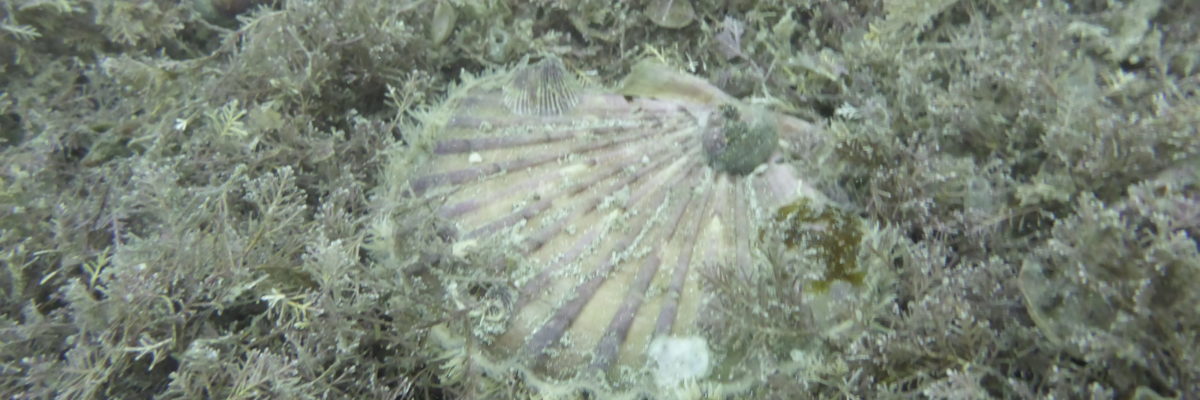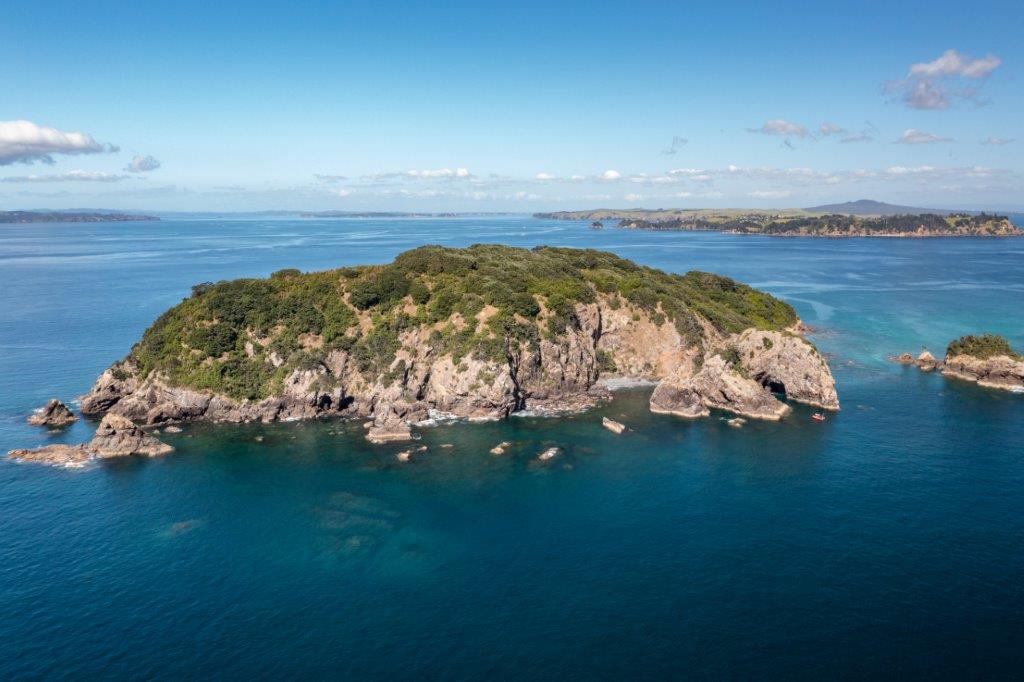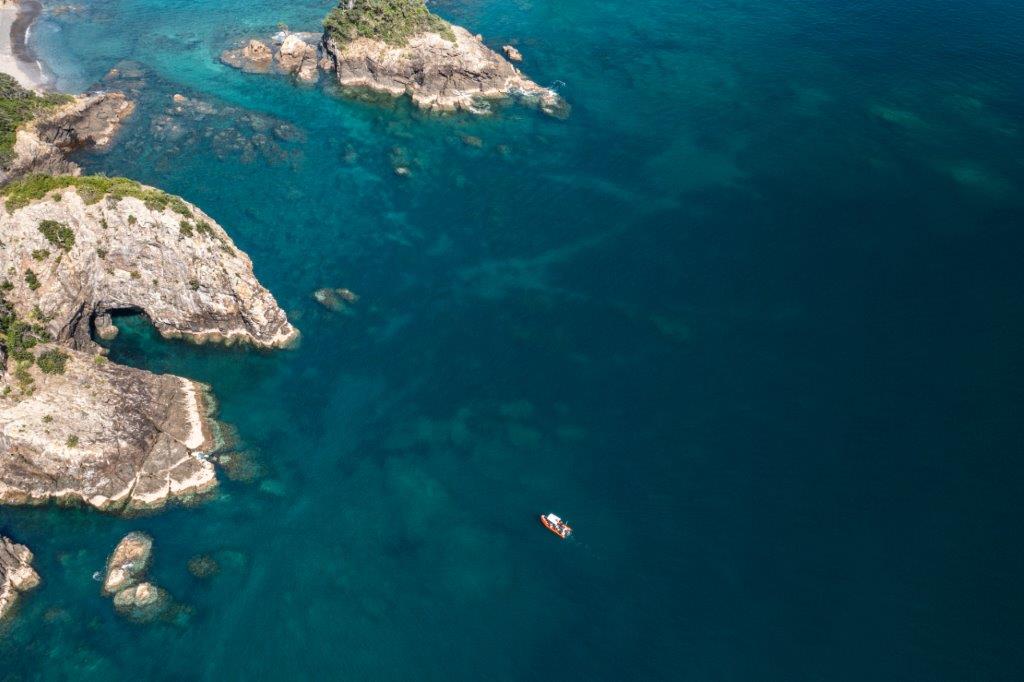The Noises hold a very special interest for seabird lovers. Being home to at least…

Saving scallops for another day
An area of the seafloor around Ōtata used to be densely covered with scallops (tupa or kuakua in te reo) along with horse mussels, dog cockles, sponges, and rhodolith beds. Despite having a scallop fishing season whose purpose is to help manage species numbers, the scallops harvested by recreational fishers around The Noises has dramatically depleted the scallop population.
Dredging for scallops and anchoring on the scallop bed has caused massive changes to the seafloor, leaving it looking like a ploughed field. These practices have severely damaged the fragile sponges, horse mussels, dog cockles, and rhodolith beds that once provided protection for a wide variety of juvenile fish and crustaceans. In fact, they provided the three-dimensional structure on the seafloor which juvenile scallops need for their own successful development. As scallops rely on population density to assist in their reproduction when their numbers are few, spread out, and they continue to be harvested – it becomes much more difficult for eggs and sperm to meet and for eggs to be fertilised. The result is an escalating downward spiral with less and less scallops until the bed finally collapses.
Thankfully, the desire to protect species of Kaimoana is increasingly evident with moves being made by recreational fishers and iwi.
We have seen recent instances of iwi-led initiatives which are supported by community and designed to protect specific species. One of these is the rāhui that was placed around Waiheke Island by Ngāti Pāoa in a move to stop the collapse of four species of Kaimoana, scallops included.
This is a fantastic initiative to help protect the inshore biodiversity of the Hauraki Gulf, Tīkapa Moana. To be able to see species return in greater abundance, enhance biodiversity, and contribute to a healthier, stronger marine ecosystem would be wonderful.



